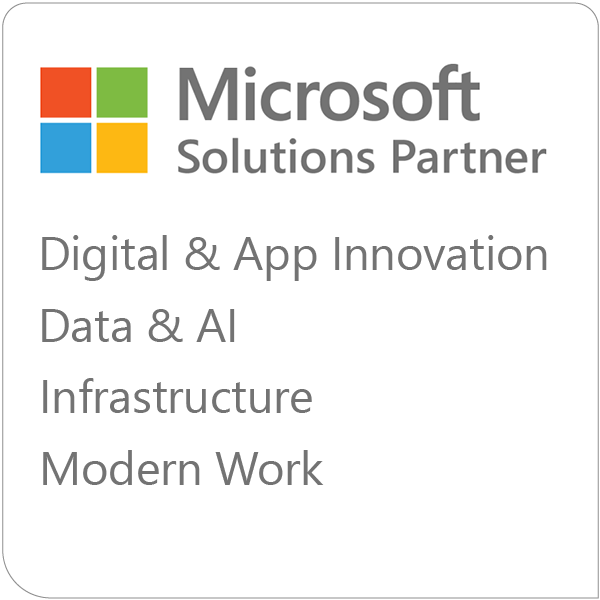If you’re creating a new website (or refreshing your existing site), one of the biggest decisions you have to make is which content management system (CMS) to use. Any CMS will let you create, edit, and publish content on your site. But not all of them will provide the same user experience or the same level of customization, scalability, security, and more.
One CMS that we recommend to many of our website development customers is Umbraco. In this article, we’ll dig into what Umbraco is, the top Umbraco features you should know about, and who might want to use Umbraco for their business website.
What is Umbraco?
Umbraco is an open-source content management system built on Microsoft’s .NET framework and written in C#. It’s a well-established CMS — Umbraco was first created in 1999 by Niels Hartvig and became a fully open-source CMS in 2005. Since then, it’s grown to have more than 700,000 active installs and a global community of more than 220,000 active members.
Umbraco is nicknamed “the friendly CMS” and is known for being flexible and easy to use.
Looking for Umbraco developers? Read about our Umbraco CMS development services.
What are the benefits of using Umbraco for your CMS?
There are hundreds of content management systems on the market, and some, like WordPress or Joomla, have more name recognition than Umbraco. But we’re big fans of Umbraco and it’s often our first choice for our clients. Here are five reasons to consider using Umbraco for your content management system.
1. An intuitive editing experience
Umbraco can power sophisticated, complex websites, but that doesn’t mean it’s complicated to use. The CMS is known for being user-friendly and intuitive for beginners and experts alike. In fact, on software review site G2, Umbraco gets an 8.7 in the “Ease of Use” category—that’s better than WordPress, Sitecore, Joomla, Drupal, and many other content management systems.
For content editors, there are several features that make it a breeze to use Umbraco.
First, your content is intuitively organized into searchable trees, making everything easy to find. It’s simple to add new content to any section of your site, create new sections, or move pages around to evolve the structure of your site, all without needing any technical skill.
Before you create content, you probably want to preview it. With Umbraco, you don’t just get one preview – you can toggle between previews of the content on multiple device types.
If your organization has a global audience, Umbraco has features to help you manage multilingual content within a single website instance. Each piece of content can exist in multiple variations at the same time.
Made a mistake with your content? No problem. Umbraco’s versioning and audit trails mean you can quickly roll back to an earlier version.
2. Flexibility and customization
What can you do with Umbraco? Almost anything. A key trait of the CMS is its flexibility.
Umbraco’s open API layers allow your developers to build their own add-ons and plug-ins to extend and customize your Umbraco site for your unique needs, including integrations with your existing tech stack. But you don’t have to do it all from scratch — there are hundreds of free extensions created by members of the Umbraco community that you can download and use.
Umbraco empowers you to create a composable DXP (digital experience platform). Unlike traditional CMS and DXP solutions, which are monolithic and tie you into a single vendor, a composable DXP lets you choose the best digital tools and put them together for a fully custom solution. For example, you could link your Umbraco CMS with an ecommerce platform, marketing tools, a product information management (PIM) solution, your CRM, and any other SaaS tools that help your business run smoothly.
According to Gartner, companies that use a composable DXP are able to deliver new features 80% faster than customers using traditional suites. Umbraco is an ideal solution for the composable DXP approach.
Umbraco is also highly scalable, which gives you the flexibility to create a solution that grows with your business. The endless potential for API integrations means that you can continue to adapt your CMS to your changing needs.
3. The .NET framework
Umbraco is backed by proven Microsoft technology. When you choose Umbraco CMS, you benefit from the many advantages of .NET, including its scalability, reliability, and security as well as thousands of packages and libraries that can easily be included in your code.
Since Umbraco 9 was released in 2021, Umbraco has been running on .NET Core, the next generation of Microsoft's framework. Umbraco has even aligned their version release schedule with Microsoft's new to ensure that you can always take advantage of the newest features and improvements in .NET as well as C#.
4. A large and supportive community
Umbraco is “the friendly CMS” and the community behind it is friendly, too. Umbraco has a great grassroots community full of passionate developers and other Umbraco enthusiasts.
You can visit the very active community at Our Umbraco to find insights, tips, documentation, and user-created plug-ins for your website. There are also Umbraco meetups around the world where you can learn from other Umbraco users, exchange ideas, or get feedback on your projects.
Umbraco HQ is also a valuable resource for the community, planning Umbraco events and hosting "office hours" so you can ask questions.
5. Umbraco is open source (free!)
You don’t have to pay for a software license to get all these great features. You can just download Umbraco for free and get started for no more than the cost of hosting.
Umbraco alternatives (and when to use them)
Of course, Umbraco isn’t the only content management platform you can use for your new website. The best choice depends on what you want to do with your site. A few common alternatives to Umbraco CMS are WordPress, Sitecore, and Kentico.
Umbraco vs. WordPress
WordPress is the most popular CMS in the world, powering over 43% of sites on the web. It’s not surprising that for many companies, it’s the first option that comes to mind. Umbraco has a small fraction of that market share at under 0.1% (stats from W3Techs), but it outshines WordPress when it comes to flexibility and customization.
Umbraco isn’t the best choice for an “out of the box” solution. If you want to select a premade theme and launch a small site or personal blog site immediately, WordPress is a sensible choice. But with the help of an expert web development team, you can use Umbraco to create the website of your dreams.
Umbraco vs. Sitecore
Like Umbraco, Sitecore is a popular .NET content management system.
Sitecore (which you can read more about here) is typically used by medium to large enterprises. It can handle millions of users or multiple web properties, so it’s a good choice for very large or complex sites. It comes with a suite of built-in tools and features like ecommerce functionality and analytics.
Sitecore isn’t open source, so it’s more expensive than Umbraco. We tend to recommend Umbraco for clients looking for flexible and customizable content editing and Sitecore for enterprise-level sites that need certain advanced features like marketing automation.
Read more about the differences between Sitecore and Umbraco.
Umbraco vs. Kentico
Yet another CMS using the .NET framework is Kentico. Unlike Umbraco, Kentico requires an annual subscription license. It’s not as customizable as Umbraco, but comes with more out-of-the-box business and marketing features.
Umbraco CMS website examples
It’s easy to talk about the benefits of this or that content management software, but when it comes to your website, you’re thinking in practical terms. What can Umbraco do for you?
To get some ideas, check out these real-life Umbraco projects we’ve worked on for our customers.
Kalahari Resorts & Conventions
After years of working with Emergent Software to enhance their existing Umbraco website, Kalahari came to us for a refresh. The team evaluated CMS options and decided to go with the latest version of Umbraco. The features that appealed most to Kalahari were the user-friendly block editor, the multilingual editing experience, and the re-platform to .net core/5+ (Microsoft’s latest development framework).
We were able to create a website that not only had a fresh new look, but also provided a superior experience for content authors and editors (we even won an Umbraco award for Best Editing Experience). The content on the site is completely componentized, making it easy for authors to build out custom pages. And there's a custom e-commerce store built right into Umbraco, which lets authors cross-promote products in different areas of the site.
Disability Hub
Disability Hub MN is a one-stop shop for Minnesotans with disabilities who are looking for more information and resources on topics like housing, jobs, managing money, and more. Given that many visitors to the site use accommodations like screen readers, keyboard navigation, and text-to-speech extensions, it was important that we could customize their new site to their needs.
Umbraco made it possible to easily integrate the required accessibility features. The new site also incorporated web form integrations to make it easier for Hub users to communicate and make specific requests to the Hub.
Work with an Umbraco gold partner
The strength of Umbraco lies with its flexibility. You can use it to create the perfect custom site for your business. But that means you need Umbraco developers with the expertise to make your website vision into reality.
Emergent Software is one of the few web development firms in the U.S. to achieve Umbraco Gold Partner status. We have extensive Umbraco experience and we’d love to talk to you about whether Umbraco is the right fit for your website.
Tell us about your website project






